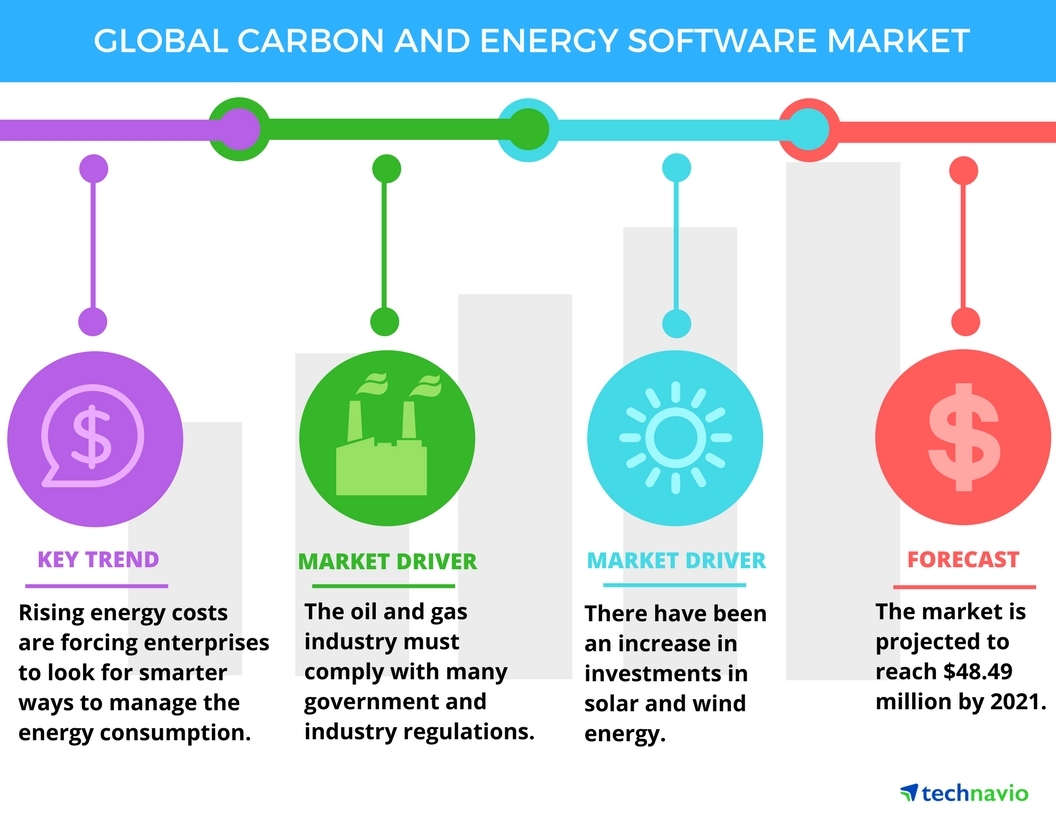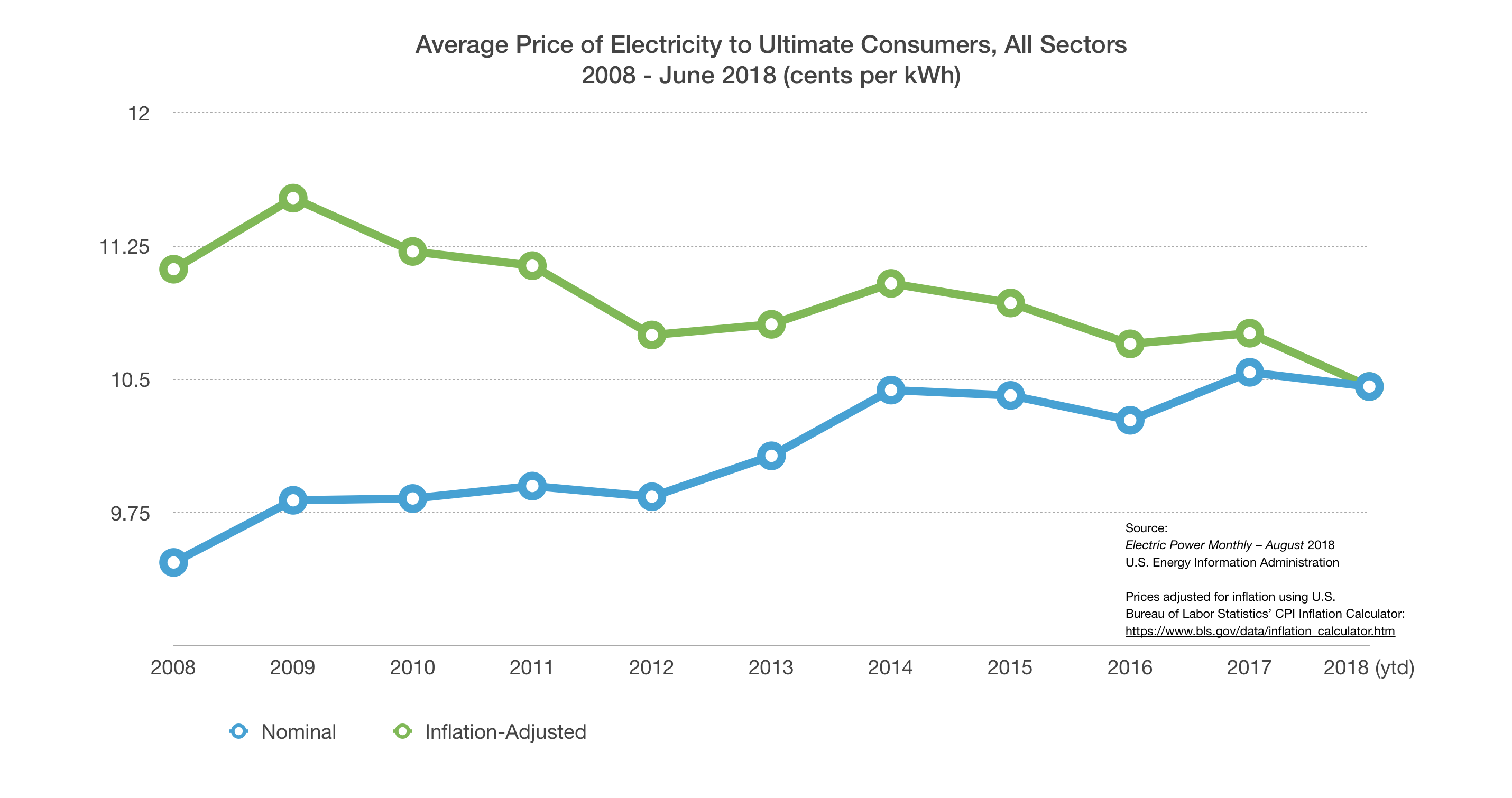
Forecast: The Future of Energy Data Software
Amy Hou | September 26, 2018 | Energy & Sustainability
Energy data software: the key to keeping corporations lean, efficient, and sustainable. Given the central importance of these software platforms, it’s no wonder that the market is set to boom. According to a new ResearchAndMarkets.com report, Global Energy Management Software Markets 2018-2022, the global energy data software market is projected to grow at 10.01 percent annually over the next four years – nearly a 50 percent ROI in total, and handily outpacing traditional investment options like index funds. This projection is slightly lower, however, than previous years’ lofty estimates.
Today, let’s break down the key trends that are driving this growth in energy data software markets – and take a peek at how Urjanet’s Utility Data Platform offers some promising new tools to navigate investor roadblocks and keep markets trending upward.
The Energy Data Software Forecast
The global energy data software market is projected to maintain a compound annual growth rate (CAGR) of 10.01 percent over the next four years – an impressive growth rate, especially for a specialized corporate market. The growth is attributable to several factors, many of which are consistent from previous years. A 2017 report by TechNavio, Global Carbon and Energy Management Software Market 2017-2021, offers a handy visual:
It’s a commonly repeated line across the energy blogosphere: energy prices are rising. While it’s true that long-term energy prices trend upwards, in U.S. markets, they haven’t kept up with inflation – electricity has remained at roughly the same price in real terms since 2008. But recently, sharp price hikes across the energy landscape have driven companies to cut back their usage – as has increasing investor pressure to go green. Oil prices have climbed nearly 13 percent since August, making Q3 2018 a particularly tough time for energy-intensive sectors like manufacturing.
(Pictured: average price of electricity to ultimate consumers, adjusted for inflation, 2008 – 2018)
So despite long-term price stability in energy markets, recent volatility in crude oil and social pressure to operate sustainably are pushing more companies to go green. Plus, even if prices aren’t rising appreciably, savings are savings: businesses that can operate efficiently still outperform more wasteful competitors.
Energy data software platforms present a tailored solution for companies looking to keep a handle on their energy use. And recent advancements in technology make implementing these solutions easier, and more rewarding, than ever.
The Cutting Edge of Energy Data Software
“[Total cost of ownership] analysis usually shows that moving to the cloud is more cost-effective than leaving the applications and data where they are, in your data center.”
One key trend identified in ResearchAndMarkets.com’s report? Cloud-based energy management solutions. These software platforms eliminate a majority of the local IT infrastructure traditionally necessary to manage large databases of energy use information. Companies like Schneider Electric pioneer this kind of cloud-based energy data software and the benefits are significant to companies who have traditionally managed their own databases.
Turn-on-a-dime scalability, distributed costs, and easy, rapidly deployable upgrades are just a few of the benefits cited by IBM’s analysis of SaaS products like today’s cloud-based energy data software solutions. Writes David S. Linthicum, chief cloud strategy officer at Deloitte: “[Total cost of ownership] analysis usually shows that moving to the cloud is more cost-effective than leaving the applications and data where they are, in your data center.”
Driving Growth, Securely
One concern identified in the report, which may be to blame for this report’s slightly less rosy CAGR projection, is data security. Recent data breaches at a handful of household names, from Equifax to Under Armour, have investors and consumers alike on edge. Energy management software, with integrations to smart infrastructure across a company’s operations, poses unique security risks: remember Smart House? Nobody wants to be on the receiving end of a cyberattack – much less one that can turn a building’s infrastructure against it.
Emerging software solutions like Urjanet, though, are shoring up energy data security. Urjanet’s automated Utility Data Platform securely retrieves utility bill data directly from utility providers, without the risk of fraudulent access or the infrastructure vulnerabilities that smart meters and other on-site energy management solutions introduce. And as a cloud-based utility data provider, Urjanet scales with your client base: whether you’ve got five hundred utility accounts to monitor, or five thousand, we’ve got you covered.
To learn more about how Urjanet enables tomorrow’s energy data software solutions, check out our Case Study: Lucid Evolves Product Offering with Urjanet. And if you’re ready to learn how Urjanet can propel your energy management software platform to new heights, click here to request a demo today.
Related Resources:
- Webinar with Arconic: Managing Energy Data from End to End
- Top 5 Uses of Energy Management Software
- An Open Letter to Sustainability Software Providers
If you like what you’re reading, why not subscribe?
About Amy Hou
Amy Hou is a Marketing Manager at Urjanet, overseeing content and communications. She enjoys writing about the latest industry updates in sustainability, energy efficiency, and data innovation.
You May Also Like
Support Business Continuity by Embracing ESG
Honor Donnie | March 18, 2022 | Energy & Sustainability


